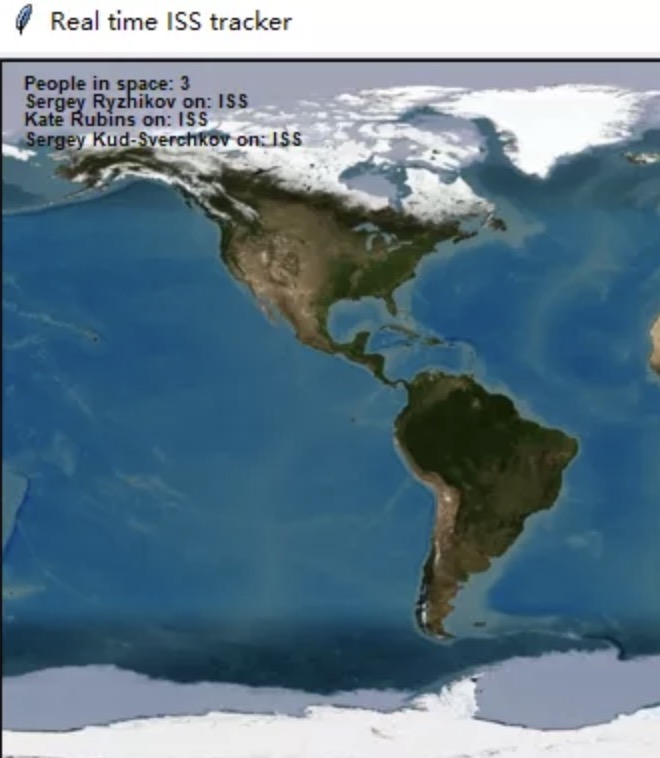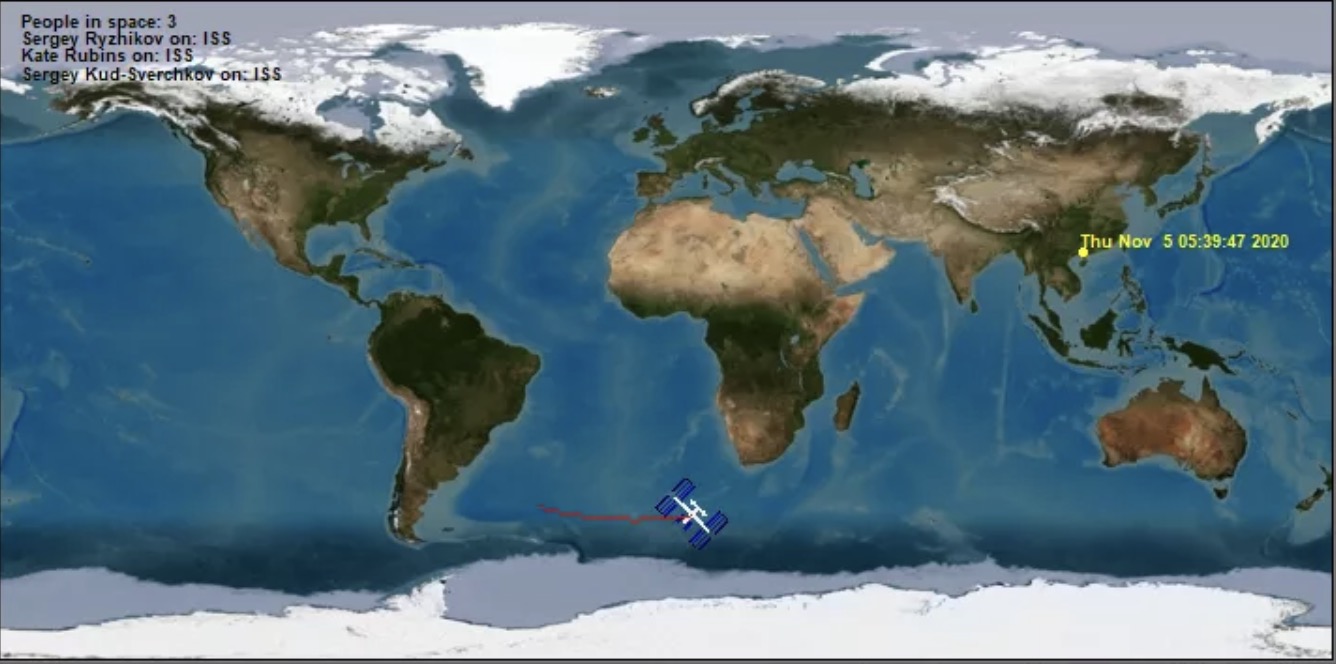Python之深入解析如何制作国际空间站实时跟踪器
Posted Forever_wj
tags:
篇首语:本文由小常识网(cha138.com)小编为大家整理,主要介绍了Python之深入解析如何制作国际空间站实时跟踪器相关的知识,希望对你有一定的参考价值。
一、前言
- Open Notify 是一个开源项目,旨在为 NASA 的一些出色数据提供简单的编程接口。
- open-notify.org 的作者做了一些工作,以获取原始数据并将其转换为与太空和航天器有关的 API。
- 现在将通过这个接口,获取得到国际空间站的位置,并实时地绘制到地图上。
- 为了实现该目标,得先安装 ISS_Info:
pip install ISS-Info
二、地图初始化
- 为了实时展示国际空间站的路径,需要使用 turtle 绘制曲线,因此可以创建一个 turtle 画布,将背景设为地球:
import ISS_Info
import turtle
import time
import json
import urllib.request
screen = turtle.Screen()
screen.setup(720, 360)
screen.setworldcoordinates(-180, -90, 180,90)
screen.bgpic("map.png")
screen.bgcolor("black")
screen.register_shape("isss.gif")
screen.title("Real time ISS tracker")
iss = turtle.Turtle()
iss.shape("isss.gif")
- 效果如下:

三、获取空间站的人数
- 如果能知道空间站上的宇航员人数,就能更加准确的跟踪国际空间站。幸运的是 open-notify 确实提供了这样的接口。
- 为了获取人数信息,必须向下列接口请求拿到数据,并将相应的宇航员名字写在左上角:
http://api.open-notify.org/astros.json
- 实现代码:
astronauts = turtle.Turtle()
astronauts.penup()
astronauts.color('black')
astronauts.goto(-178,86)
astronauts.hideturtle()
url = "http://api.open-notify.org/astros.json"
response = urllib.request.urlopen(url)
result = json.loads(response read())
print("There are currently " + str(result ["number"]) + " astronauts in space:")
print("")
astronauts.write("People in space: " + str(result["number"]), font=style)
astronauts.sety(astronauts.ycor() - 5)
people = result["people"]
for p in people:
print(p["name"] + " on: " + p["craft"])
astronauts.write(p["name" ] + "on:" + p["craft"], font=style)
astronauts.sety(astronauts.ycor() - 5)
- 效果如下:

四、绘制空间站位置
- 为了能够绘制空间站的实时位置,需要请求拿到空间站的位置信息。请求的接口是:
http://api.open-notify.org/iss-now.json
- 不过作者将其封装成了一个函数,我们直接调用 iss_current_loc 即可,循环获取国际空间站位置:
while True :
location = ISS_Info.iss_current_loc()
lat = location['iss_ position']['latitude']
lon = location['iss_ position']['longitude']
print("Position: \\n latitude: {}, longitude: {}" .format(lat, lon))
pos = iss.pos()
posx = iss.xcor()
if iss.xcor() >= (179.1): ### Stop drawing at the right edge of
iss.penup() ### the screen to avoid a
iss.goto(float(lon), float(lat)) ### horizontal wrap round line
time.sleep(5)
else:
iss.goto(float(lon), float(lat))
iss.pendown()
time.sleep(5)
- 我们还可以标出自己目前所处的位置,以查看和国际空间站的距离及空间站经过你上空的时间点(UTC)。
# 深圳
lat = 112.5118928
lon = 23.8534489
prediction = turtle.Turtle()
prediction.penup()
prediction.color('yellow')
prediction.goto(lat, lon)
prediction.dot(5)
prediction.hideturtle()
url = 'http://api.open-notify.org/iss-pass.json?lat=' + str(lat-90) + '&lon=' + str(lon)
response = urllib.request.urlopen(url)
result = json.loads(response.read())
over = result ['response'][1]['risetime']
prediction.write(time.ctime(over), font=style)
- 不过这里值得注意的是,iss-pass.json 这个接口的纬度计算必须在 -90 到 90 之内,因此深圳的纬度需要减去 90。
- 最终效果如下:

以上是关于Python之深入解析如何制作国际空间站实时跟踪器的主要内容,如果未能解决你的问题,请参考以下文章
深入解析,python合并多张图片成视频,可用于批量制作短视频
Python之深入解析如何使用Python Kivy实现一个“乒乓球”游戏
Python之深入解析如何一键批量生成真实的手机号码及其号码归属地解析